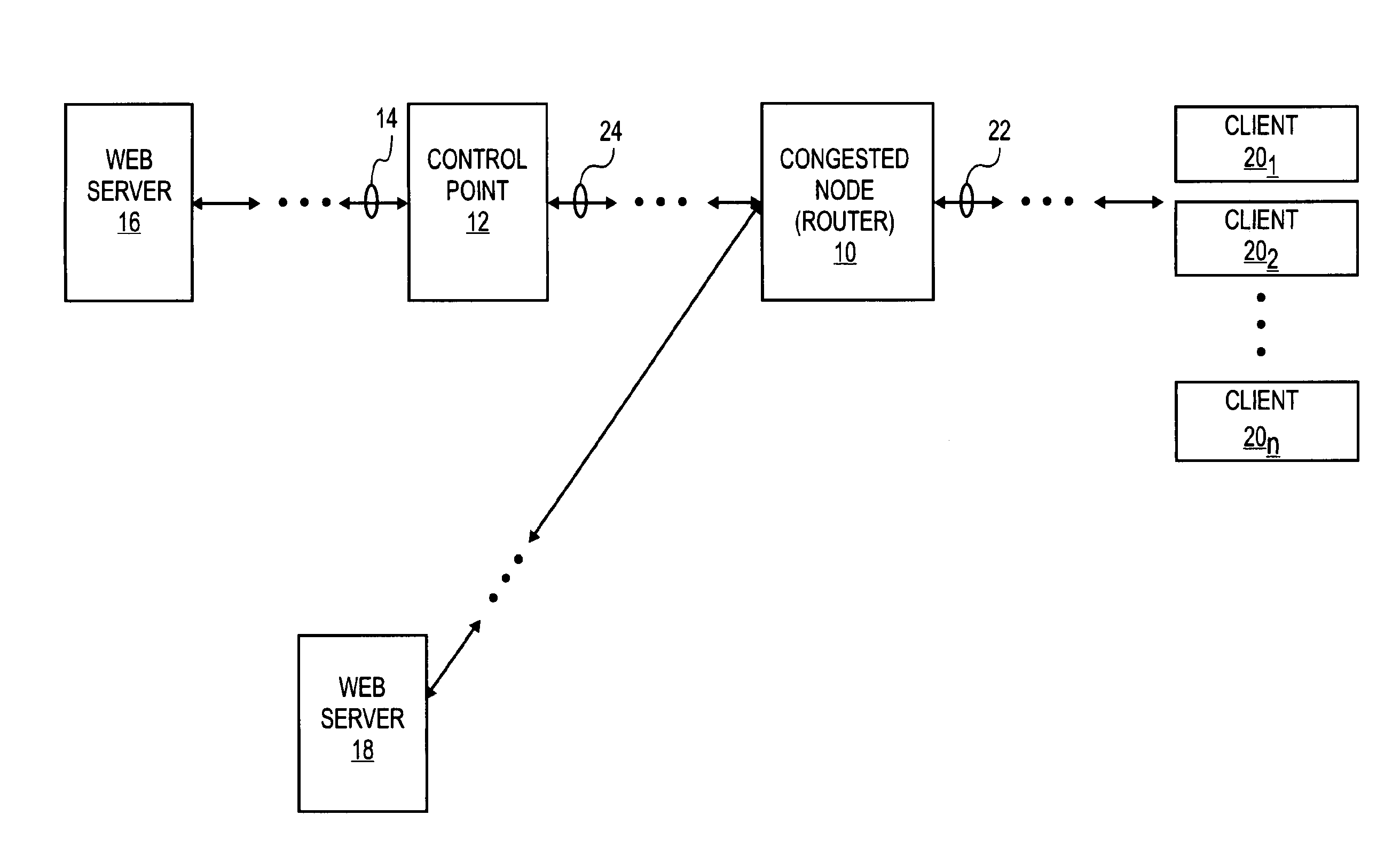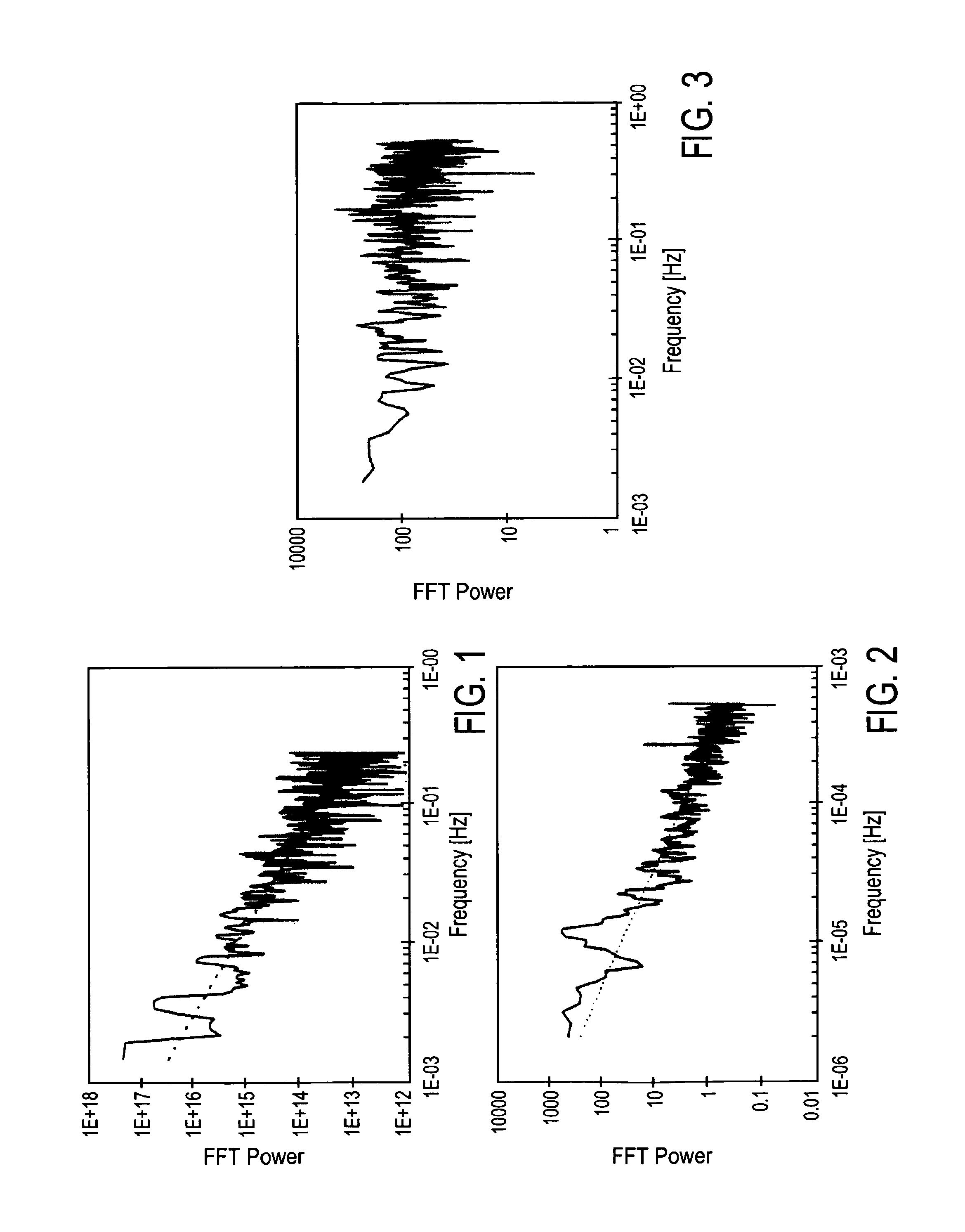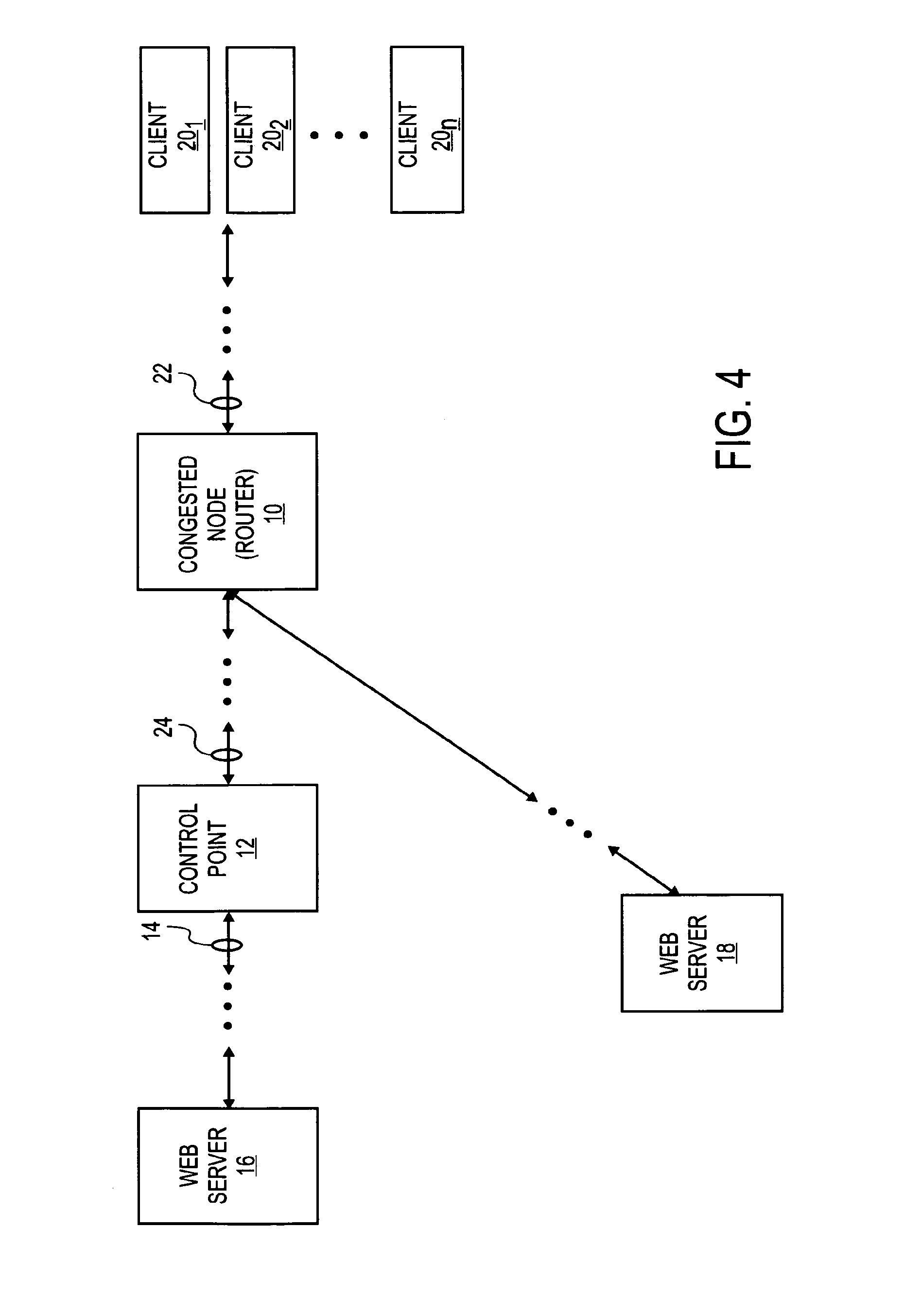Method of reducing packet loss by resonance identification in communication networks
a technology of resonance identification and communication network, applied in data switching networks, frequency-division multiplexes, instruments, etc., can solve problems such as inability to achieve, and increase the load on the network
- Summary
- Abstract
- Description
- Claims
- Application Information
AI Technical Summary
Benefits of technology
Problems solved by technology
Method used
Image
Examples
Embodiment Construction
[0015]A scheme for operating control nodes of a computer or other communication network that utilizes packet switching techniques is disclosed herein. As discussed in greater detail below, the present scheme allows for control nodes to be operated at points that correspond to instances of minimum packet loss (maximum throughput) for given network traffic conditions. These same control points also correspond to instances of minimum fetch time, thus allowing for improved user experience (i.e., by reducing the time needed to download content from a content site). Although discussed with reference to certain illustrated embodiments, upon review of this specification, those of ordinary skill in the art will recognize that the present scheme may find application in a variety of systems. Therefore, in the following description the illustrated embodiments should be regarded as exemplary only and should not be deemed to be limiting in scope. It should also be noted that as used herein the te...
PUM
 Login to View More
Login to View More Abstract
Description
Claims
Application Information
 Login to View More
Login to View More - R&D
- Intellectual Property
- Life Sciences
- Materials
- Tech Scout
- Unparalleled Data Quality
- Higher Quality Content
- 60% Fewer Hallucinations
Browse by: Latest US Patents, China's latest patents, Technical Efficacy Thesaurus, Application Domain, Technology Topic, Popular Technical Reports.
© 2025 PatSnap. All rights reserved.Legal|Privacy policy|Modern Slavery Act Transparency Statement|Sitemap|About US| Contact US: help@patsnap.com



